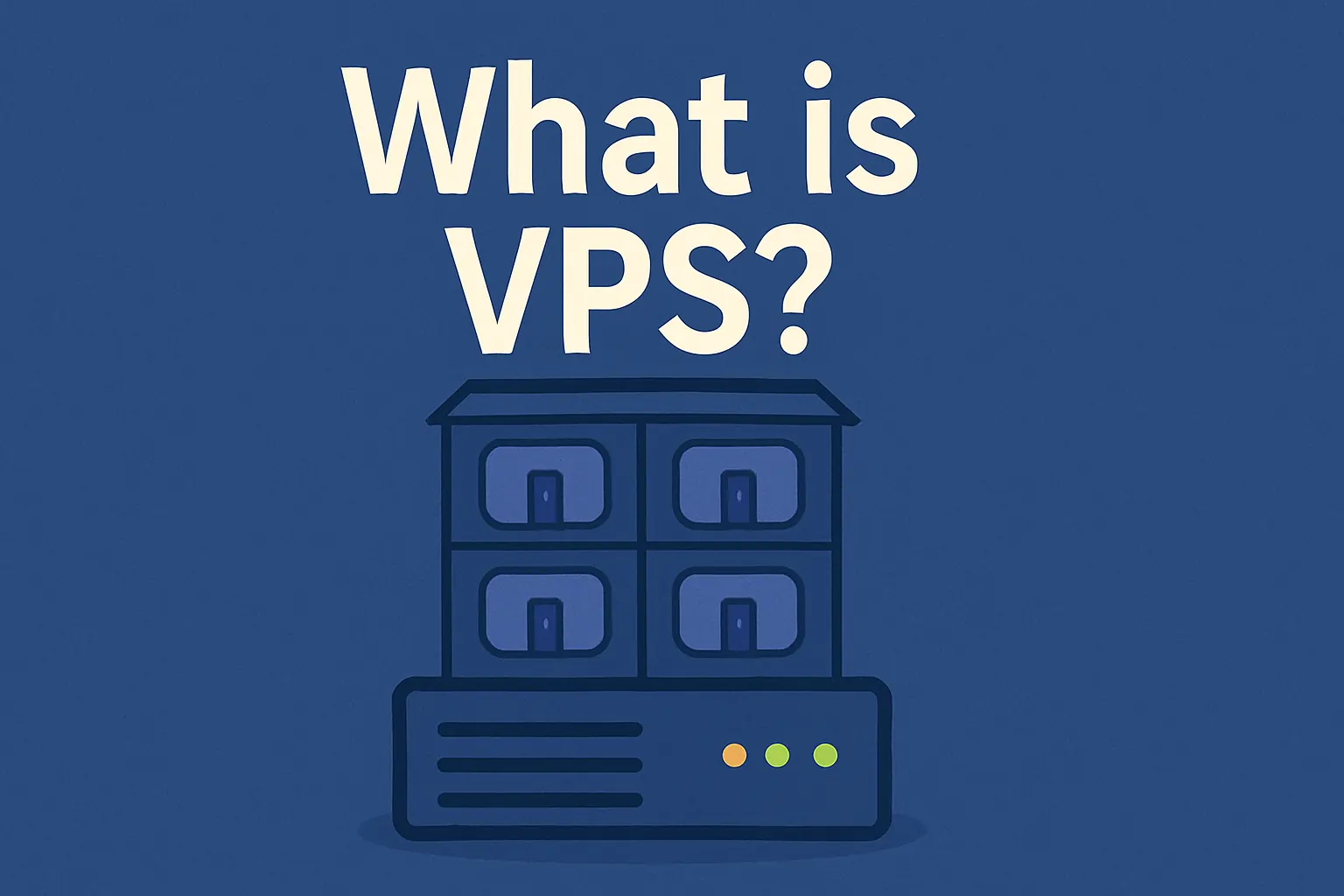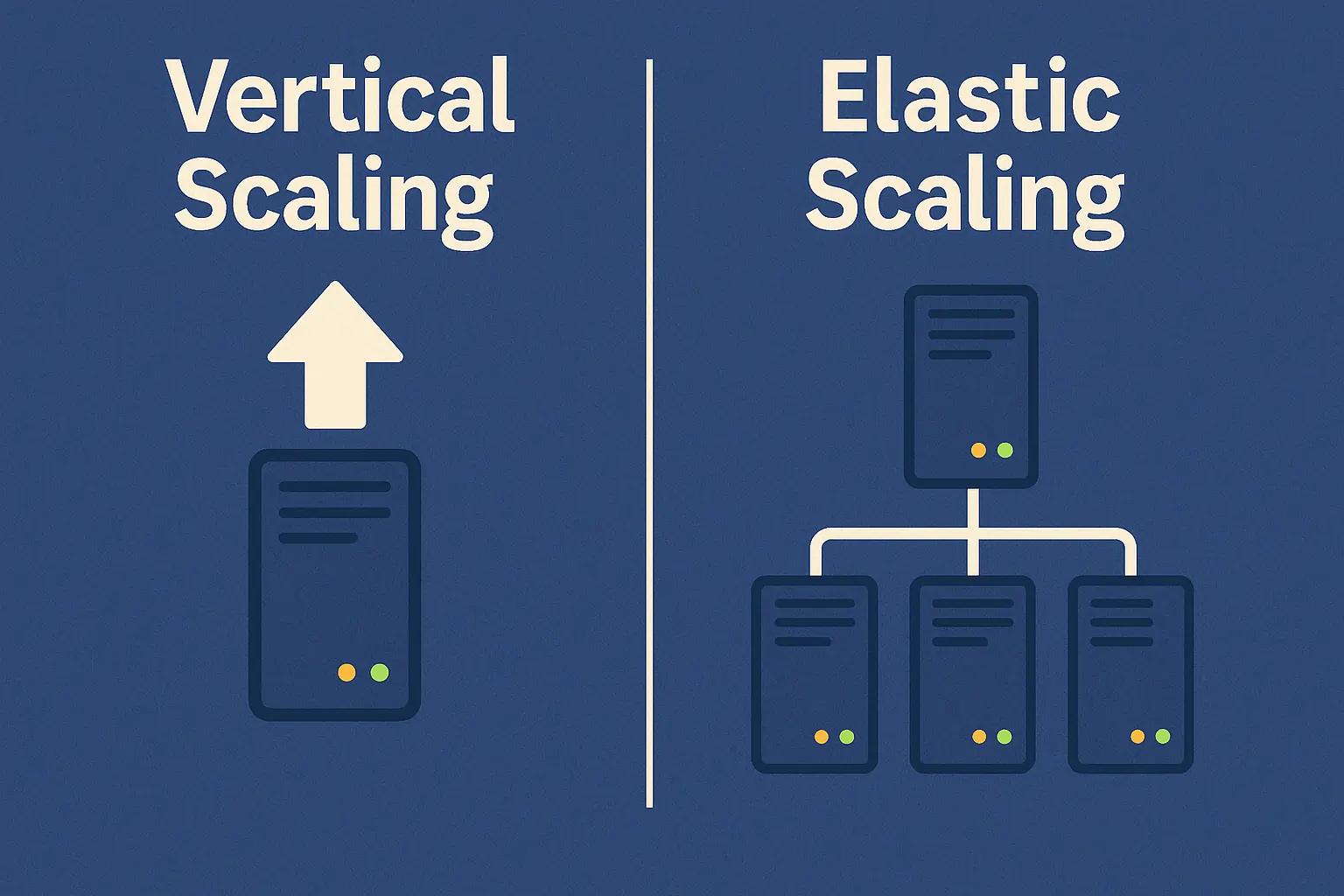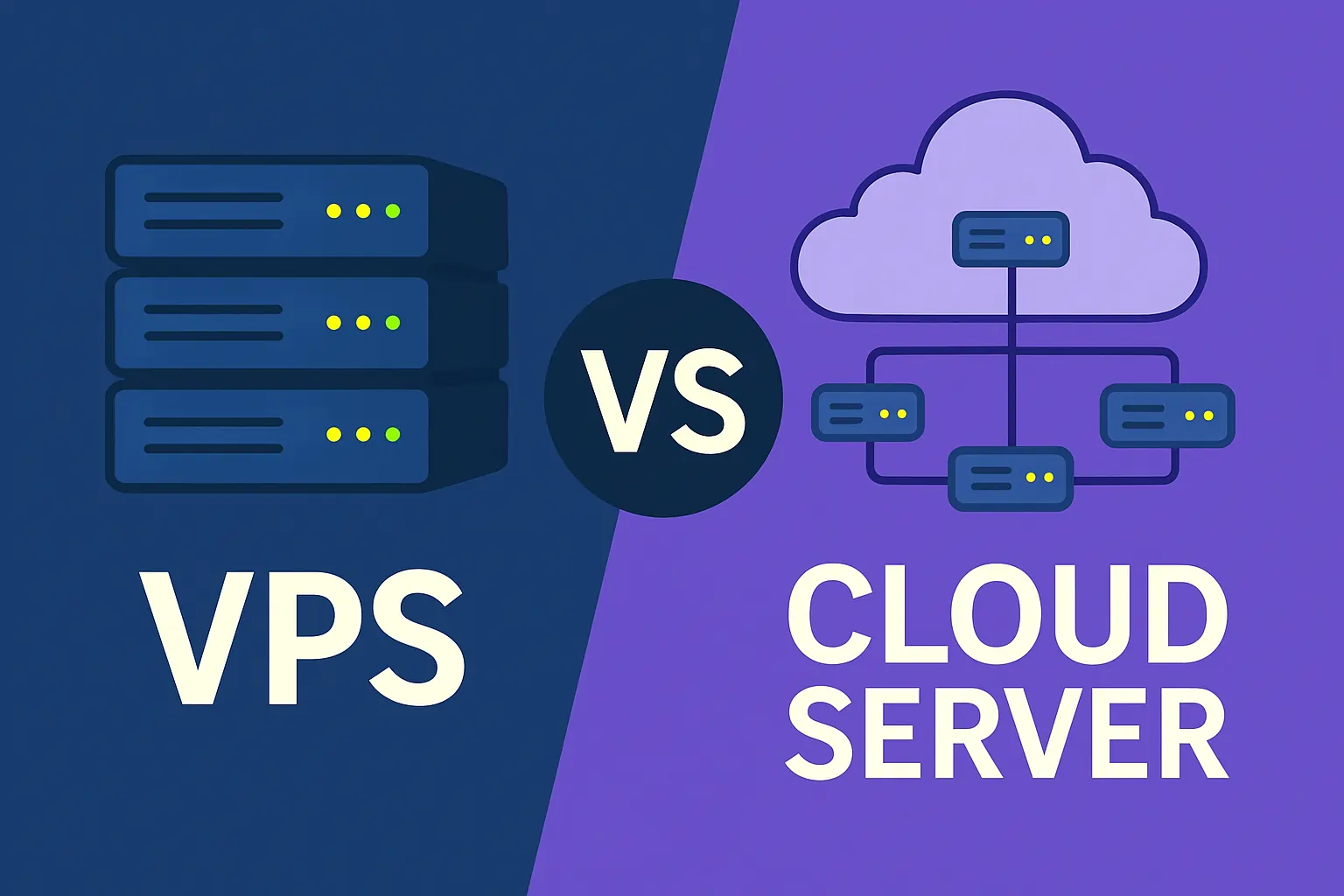VPS vs. Cloud Servers: The Ultimate 2025 Guide
Choosing the right hosting environment is one of the most critical decisions for your business or project. When you’ve outgrown the limitations of shared hosting, you step into a world of greater power, control, and scalability. The two most prominent contenders in this arena are the Virtual Private Server (VPS) and the Cloud Server.
At first glance, they can seem confusingly similar. Both offer dedicated resources, root access, and a significant step up from shared environments. However, fundamental differences in their underlying architecture, scalability, and pricing models make them suitable for different needs. The lines have blurred in recent years, with many providers offering hybrid solutions, but understanding their core concepts is essential to avoid costly mistakes.
This comprehensive guide will demystify the VPS vs. Cloud debate. We’ll dive deep into each architecture, present a detailed head-to-head comparison, and provide clear use cases to help you determine which solution fits your specific goals, budget, and technical requirements in 2025 and beyond.

What is a VPS? The Digital Apartment Building Analogy
Think of a traditional physical server as a massive, standalone office building. It’s powerful, but you must rent the entire thing, even if you only need a few rooms. Shared hosting, on the other hand, is like one giant open-plan office where everyone shares the same space and resources, leading to noise and crowding.
A Virtual Private Server (VPS) offers the perfect middle ground.
Analogy: The Digital Apartment Building. A VPS is like an apartment in a large building. The building itself is a single, powerful physical server. This server is partitioned into multiple, completely isolated virtual environments using a hypervisor (like KVM or Xen) technology. Each apartment (VPS) has its own set of dedicated resources: a specific number of bedrooms (CPU cores), a guaranteed-sized living room (RAM), and its own storage space (SSD/HDD).
You can’t use your neighbor’s resources, and they can’t use yours. Your apartment is private and secure. While you share the building’s main infrastructure (power, water, foundation), your daily living space is yours.
Key Characteristics of VPS Hosting
- Guaranteed Resources: When you purchase a VPS plan, you are allocated a specific % of CPU, RAM, and storage that is 100% yours. This “noisy neighbor” effect, common in shared hosting, is eliminated, leading to consistent and predictable performance.
- Root Access and Full Control: A VPS provides access to the whole root (or administrator) control. This means you have complete control over your environment. You can install any operating system (OS), customize software configurations, and manage your server as your dedicated machine.
- Security through Isolation: Because each VPS is a self-contained virtual machine, it is securely isolated from other VPS instances on the same physical hardware. A security breach or a resource-hogging application on another VPS will not directly impact your environment.
- Predictable, Fixed Costs: VPS hosting is almost always sold on a fixed monthly or annual subscription model. You pay a set price for your allocated resources, making budgeting simple and predictable.

What is a Cloud Server? The Fleet of Interconnected Vehicles Analogy
A Cloud Server operates on a fundamentally different principle. It isn’t tied to a single physical machine. Instead, it leverages the power of a vast, interconnected server network that works together as one cohesive unit.
Analogy: The Fleet of Interconnected Vehicles. Imagine instead of renting an apartment, you have access to a massive, shared fleet of vehicles. This fleet includes everything from small motorbikes (low CPU/RAM) to large transport trucks (high CPU/RAM).
You don’t use a pre-assigned car when you need to run an errand (your application). You request a vehicle that perfectly matches your current needs. You get a motorbike if you’re picking up a small package. If you’re moving house, you instantly get a large truck. If one truck breaks down, another from the fleet seamlessly takes over, so your job is never interrupted. You only pay for the type of vehicle you use and for how long you use it.
This is the essence of a cloud server. It’s a virtual machine that draws resources from a cluster of physical servers. Your website, data, and applications are distributed across this network.
Key Characteristics of Cloud Hosting
- The cloud’s defining features are high availability and redundancy. Because your server isn’t reliant on a single piece of hardware, it is inherently protected from single points of failure. If one physical server in the cluster fails, your cloud server is automatically migrated to another healthy server in the network with no downtime.
- On-Demand, “Elastic” Scalability: Cloud servers are incredibly flexible. If your website experiences a sudden traffic surge, you can scale your resources (CPU, RAM) up or down in real-time, often automatically. This is known as “elasticity,” ensuring you have the power you need, exactly when you need it.
- Pay-As-You-Go Pricing Model: The most common cloud pricing model is utility-based. You are billed for the resources consumed over time (e.g., per hour or minute). This can be highly cost-effective for applications with variable traffic, but it is harder to predict than a fixed VPS plan.
- Networked Infrastructure: All components, from storage to processing, are part of a distributed network, which allows for easy integration of advanced features like load balancing, content delivery networks (CDNs), and complex firewall configurations.
VPS vs. Cloud: A Detailed Head-to-Head Comparison
Now that we understand the core concepts, let’s compare the critical features most matter to users.
1. Architecture and Redundancy
- VPS: The most significant vulnerability of a standard VPS is its reliance on a single physical host machine. If that machine experiences a hardware failure (e.g., a failing power supply, RAM module, or hard drive), your VPS will go offline until the hardware is repaired or replaced.
- Cloud Server: This is where the cloud shines. Its distributed architecture provides inherent redundancy. Your data is often stored on a separate, highly available storage network (like a SAN), and the compute instance runs across the cluster. If the physical node running your server fails, the network automatically relaunches your example on a healthy node, resulting in minimal to zero downtime.
- Winner: Cloud Server
-
Read More: What Is a Tower Server?
2. Scalability: Scaling Up vs. Scaling Out
- VPS: Scaling a VPS is typically vertical scaling. If you need more power, upgrade your plan to one with more RAM, CPU, and storage. While often easy, this may require a reboot, causing a brief period of downtime. The maximum capacity of the physical host server also limits you.
- Cloud Server: The cloud excels at elastic scaling. You can increase or decrease resources on demand, often without a reboot. This is perfect for handling unexpected traffic spikes. For example, an e-commerce store can automatically add more resources during a Black Friday sale and then scale down when the traffic subsides.
- Winner: Cloud Server
3. Performance: Consistency vs. High-Traffic Bursts
- VPS: Performance on a VPS is remarkably consistent. Because your resources are dedicated, you get what you pay for, 24/7. This makes it ideal for applications with stable, predictable performance requirements, such as a mail server, a CRM, or a medium-traffic website.
- Cloud Server: While generally high-performing, cloud performance can be slightly more variable due to its shared network infrastructure. However, its true strength lies in its ability to scale resources to handle massive, sudden traffic bursts rapidly. It’s designed for dynamic and unpredictable workloads.
- Winner: Tie. It depends on the need: consistency (VPS) or spike-handling (Cloud).
4. Pricing Models: Fixed Monthly vs. Pay-As-You-Go
- VPS: A VPS’s simple, fixed monthly cost is a huge advantage for businesses that must manage their budgets carefully. You know exactly what your bill will be every month, with no surprises. This is ideal for startups, small businesses, and developers.
- Cloud Server: The pay-as-you-go model is a double-edged sword. It can be incredibly cost-efficient if your resource usage is low or sporadic. However, it can also lead to unexpectedly high bills if an application consumes more resources than anticipated (e.g., due to a bug or a DDoS attack). Budgeting becomes more complex and requires careful monitoring.
- Winner: VPS (for predictability and simplicity).
5. Management and Control
- VPS & Cloud Server: In most cases, both VPS and Cloud Servers offer full root access, allowing you to configure the environment exactly as you see fit. You can choose your OS and install any compatible software. The management level depends on the provider and your selected plan (unmanaged, semi-managed, or fully-managed).
- Winner: Tie.
The Modern Hybrid: What is a “Cloud VPS”?
To add to the confusion, many of today’s leading hosting providers offer a hybrid solution often marketed as a “Cloud VPS.”
This model aims to provide the best of both worlds. It offers a traditional VPS’s simple, predictable, fixed-price billing and guaranteed resources, but the underlying infrastructure is built on a highly available cloud cluster.
This means you get:
- The easy-to-budget monthly cost of a VPS.
- The high availability and redundancy of the cloud.
- Protection from single-point hardware failures.
This “Cloud VPS” model represents the ideal balance of performance, reliability, and cost-effectiveness for most users.
When to Choose a VPS (or Cloud VPS)
A VPS or a modern Cloud VPS is the perfect choice for:
- Small to Medium-Sized Businesses (SMBs): For hosting company websites, email servers, and internal applications with predictable traffic.
- Web Developers and Agencies: An excellent, cost-effective way to host multiple client websites in an isolated, secure environment.
- Budget-Conscious Startups: When you need more power and control than shared hosting, but don’t have the budget or traffic to justify a complex cloud setup.
- Running Specific Applications: Ideal for game, voice, or database servers requiring consistent performance.
- Anyone who values predictable monthly billing.
When to Choose a “True” Cloud Server
A proper, pay-as-you-go cloud server environment is the right choice for:
- High-Traffic Websites & E-commerce: For platforms that experience significant, unpredictable traffic spikes (e.g., news sites, online stores during sales events).
- SaaS (Software-as-a-Service) Platforms: Applications that need to scale rapidly as their user base grows.
- Big Data and Analytics: This is used to process massive datasets where computing resources are needed for short, intensive periods.
- Mission-Critical Applications: When 99.999% uptime is a legal or business requirement, and any downtime is catastrophic.
- Development & Testing Environments: When developers need to spin up and tear down multiple server environments quickly.

Conclusion
The “VPS vs. Cloud” debate doesn’t have a single winner. The “better” solution is the one that aligns perfectly with your project’s specific needs.
- Choose a VPS (or a modern Cloud VPS) if you value cost predictability, consistent performance, and simplicity, and your traffic is relatively stable. It offers a powerful, controlled environment without the complexity of utility billing.
- Choose a “True” Cloud Server if your primary needs are extreme scalability to handle volatile traffic, and the highest possible level of uptime and redundancy. Be prepared for a more complex, variable billing model.
By understanding the fundamental architectural differences and aligning them with your business goals, you can make an informed decision that will be a robust and reliable foundation for your digital success.


